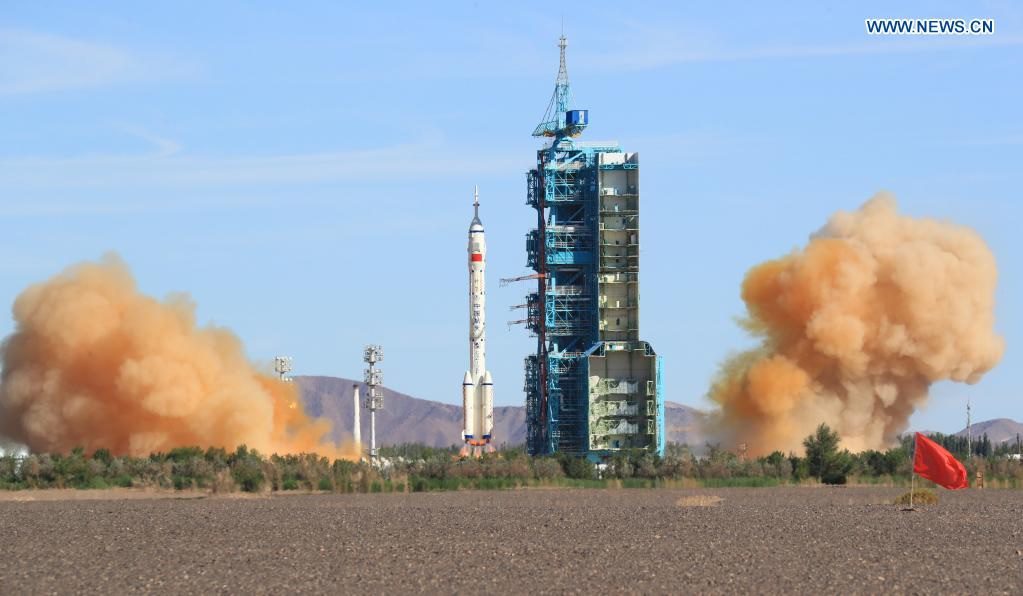China launched its first crew to the Tianhe core module of the formative China Space Station (CSS) on 17 June, marking a historic development for this relatively new spacefaring nation. The Shenzhou-12 spacecraft was launched to a 380 km low Earth orbit on a Long March 2F (CZ-2F) vehicle from the Jiuquan Satellite Launch Center, carrying three crew members: Commander Nie Haisheng, Operator 1 Liu Boming and Operator 2 Tang Hongbo. The spacecraft took just over six hours, from its launch at 0122 GMT, to reach the Tianhe module, where it performed a successful docking at 0754 GMT.

The Long March 2F rocket lifts-off from the Jiuquan Satellite Launch Center carrying the three crewmembers to orbit. Courtesy of Xinhua/Ju Zhenhua
The flight is significant in being China’s first crewed mission in almost five years and it is planned to be the longest mission so far. Shenzhou-11, in 2016, set a Chinese spaceflight duration record of 33 days, but the Shenzhou-12 crew is expected to remain in orbit for three months. Although Chinese astronauts are not household names in the West, their experience is shown by the fact that this is Nie’s third spaceflight and Liu’s second; only Tang is a rookie. Nor could they be described as ‘young’, as their respective ages are 56, 54 and 45. Nie is understood to be the oldest Chinese astronaut to go into space.
The flight is also significant because it makes China only the third nation to populate a space station that was designed and built domestically. In this regard, it follows the Soviet Union’s Salyut and Mir stations and America’s Skylab; the International Space Station (ISS) is, of course, a multinational programme.
The Shenzhou-12 mission is the first of four crewed flights to the CSS, which is expected to be completed by the end of 2022 and has a 10-year design-life. Construction began in April this year with the launch of Tianhe, which at 16.6 m long and 4.2 m in diameter is the largest of the three planned modules. It has five docking ports to accommodate the other two modules and visiting spacecraft.
Launches of the Tianzhou-3 cargo spacecraft and Shenzhou-13 crewed mission are expected in September and October, respectively, followed by the Wentian and Mengtian experiment modules in 2022. The CSS is expected to be joined in orbit by a Hubble-class space telescope – the Chinese Space Station Telescope (CSST) – in 2024 and China has welcomed future international participation, ‘opening the hatch’ for both science experiments and visiting astronauts.
Interestingly, from a political perspective, it is doubtful that a Chinese space station would be in orbit today had Chinese astronauts been allowed to visit the ISS. However, in 2011, the US Congress passed a law citing national security concerns that effectively banned Chinese astronauts from the station. As a result, if the ISS is decommissioned later this decade, the CSS may end up being the only permanently crewed space station in Earth orbit.








